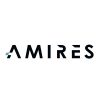The OECD project NanoAOP published in December 2020 their contribution towards the future development and application of AOPs for manufactured nanomaterial regulatory decision making by following the principles established by the OECD. The contributions are represented in a series of OECD reports and contributes: (i) a systematic process for mining the nanotoxicity literature to identify potential KEs relevant for MNs and (ii) a strategy to prioritize identified potential KEs for future development. It demonstrates a methodology for developing KEs relevant for MNs, from evidence gathered from the literature. The project produced one case study represented by the tissue injury KE as an example for the development of the methodology. In addition, the NanoAOP Database is a major contribution to this project.
More information can be found in the series of reports produced by the NanoAOP project:
The recommendations in this report highlight key next steps to improve and keep this resource updated. The two workshops organised in 2018 and 2019, gathering a broad set of expertise provided a platform to (i) discuss approaches and methodologies developed in this project, and (ii) gather input on the status, use, and future needs for use of the AOPs in the risk assessment of MNs
This report outlines the methodology, through a case study approach, for identifying key events (KEs) that could support development of AOPs relevant for MNs. This included the development of the NanoAOP database, the quality evaluation of the published literature, and a process to support the identification of a KE, which were used to identify literature reporting on inflammation and associated endpoints following exposure in vitro or in vivo to MN. Finally, the results were discussed at the OECD workshop on “Advancing Adverse Outcome Pathway (NanoAOP) Development for Nanomaterials Risk Assessment and Categorisation” (September 2019) for review and feedback on (i) the methodology developed and (ii) the current status, use and future needs of AOPs relevant to MNs in support of their use in human health risk assessment and decision making.
The EU H2020 project SmartNanoTox together with the project PATROLS organised a workshop in collaboration with the OECD in December 2020 to provide feedback on the methodology proposed to for Advancing Adverse Outcome Pathway (AOP) Development for Nanomaterial Risk Assessment and Categorisation, as well as on the case study, and to reach consensus on areas that could be further explored in the short, medium, and long term. Invited stakeholders had the opportunity to comment on those and to reach consensus on the areas that could be further explored in the short, medium and long term. The workshop dealt with the following points of interest: 1) Translating Scientific Advances in the AOP Framework to Decision Making for Nanomaterials 2) Recommendations in moving forward 3) Problem Formulation 4) Overview of AOP Framework and Current Status 4) Potential Applications of AOPs 5) AOPs Development and Application for MNs 6) Progress in AOP Development for Manufactured Nanomaterials 6) Progress in Application and Use of AOPs 8) Challenges of AOPs for MNs
Further information on the workshop is available in the aforementioned OECD report.



















